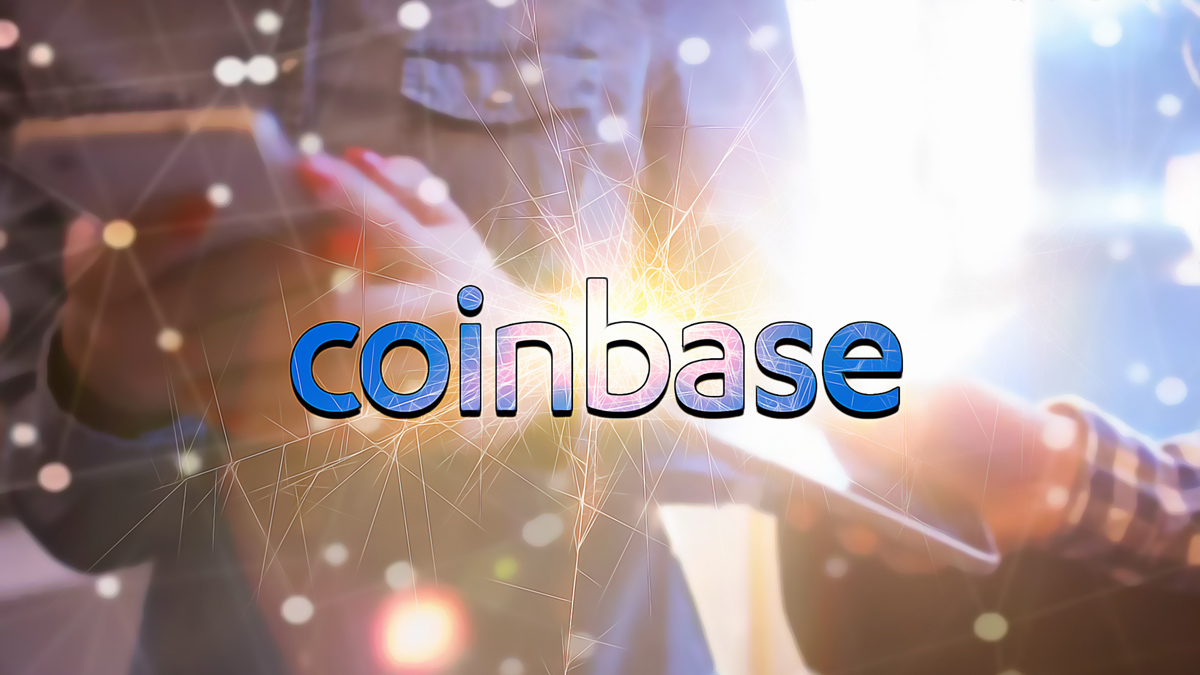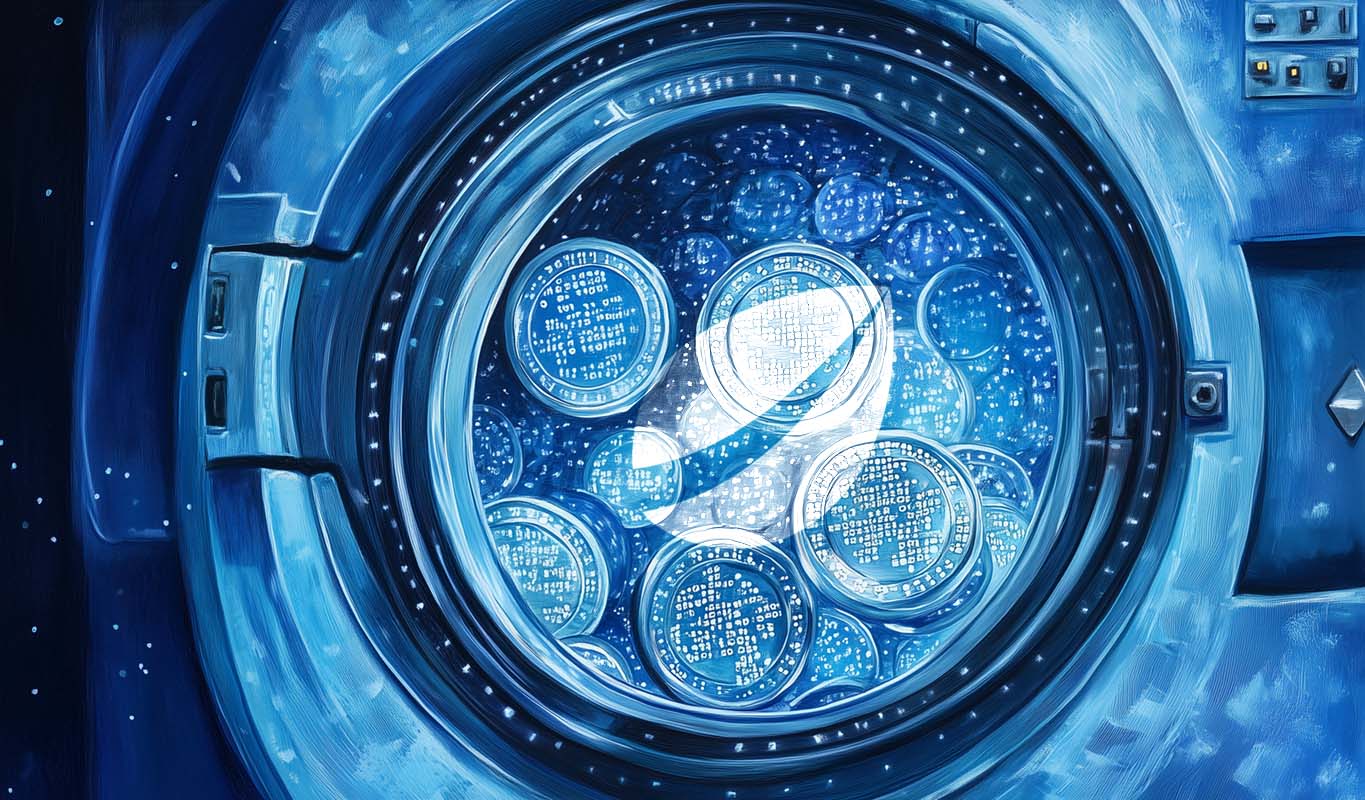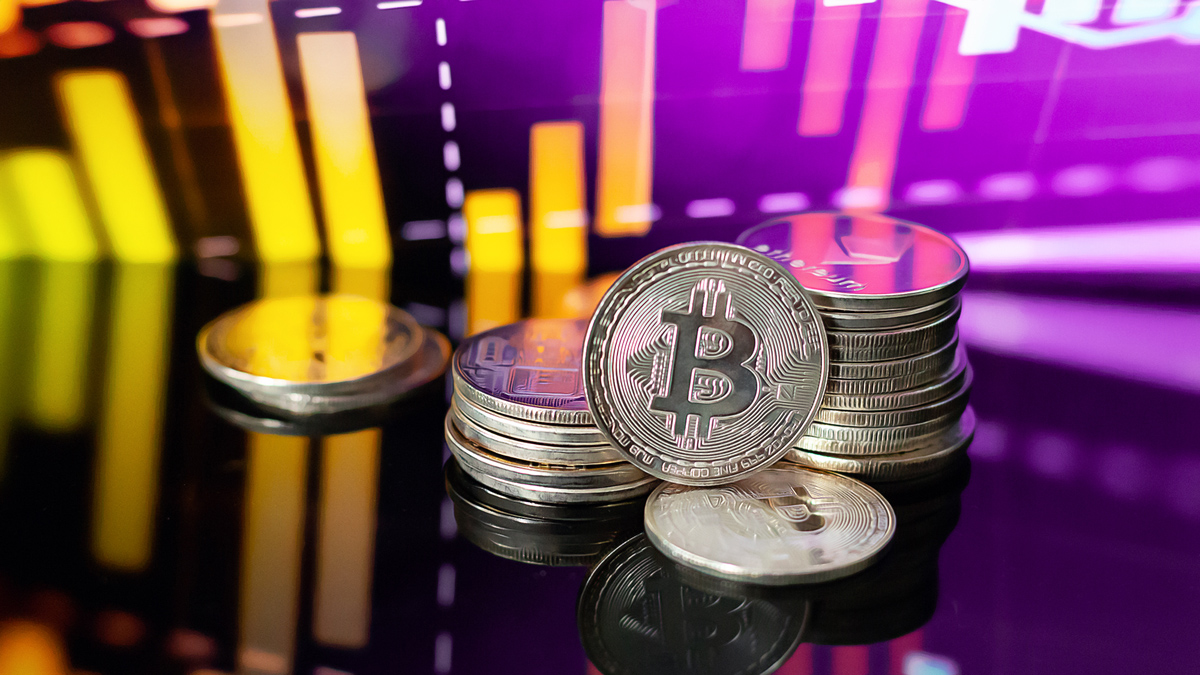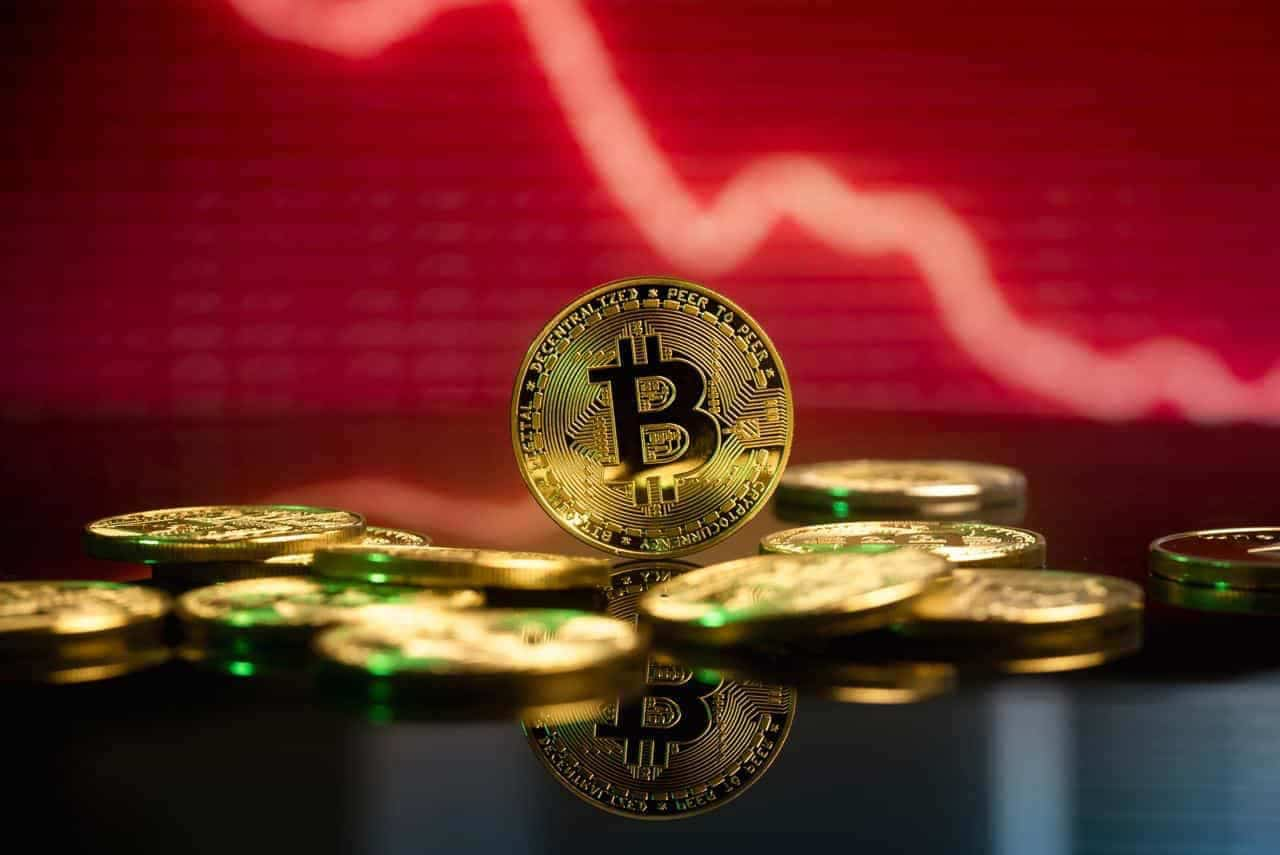
Bitcoin ( BTC ) has been many things in its 16-year existence, with some claiming it to be little more than a gambling fad and yet others taking a completely opposite stance and positioning it as the biggest financial revolution in recent history. For the famed American finance writer and founder of HS Dent Investment Management, Harry Dent, it is the latter. Furthermore, the author went as far as to recommend everyone invest in the cryptocurrency as the great reshaper of global finance, albeit with a caveat, in a David Lin interview published on April 14. Specifically, Dent opined that BTC is far from a safe haven, meaning that in the burst phase he believes the ‘everything bubble’ is in in 2025, the digital asset should be avoided along with most other assets. Bitcoin should, however, be heavily invested in once the crash has taken hold. This is one of the biggest misconceptions: that Bitcoin Bitcoin and crypto are the safe haven. Absolutely not, they are the biggest bubble. Why Bitcoin is a ‘strong sell’ in 2025 but a ‘strong buy’ later Though Harry Dent’s prediction that a 50% crash would take place by the summer and then be followed by a 90% collapse is yet to be confirmed – and though there is room to doubt it as he has, along with in the interview, been predicting such a calamity for years – Bitcoin’s recent performance hasn’t been instilling much confidence. At press time on April 16, BTC was simultaneously expensive and struggling. At $83,396, it was 10.82% down in 2025, with a pattern of lower highs followed by lower lows, yet also more expensive than at any point in history before November 2024. BTC YTD price chart. Source: Finbold I didn’t get it at first, except I could see that Bitcoin was acting just like Amazon, the leader of the Dot retailers, which was the first tech bubble. I said it was acting just the same. I said, ‘No this is the next bubble, this is a big thing.’ Now I get it. A guy at my own conference three years ago says crypto and Bitcoin is basically, the restructuring of the entire financial services industry. How to weather the storm and thrive after it passes In the interview, Harry Dent also revealed which assets are the best to buy for the crash itself, reflecting primarily on 30-year treasuries and the iShares 20+ Year Treasury Bond ETF (NASDAQ: TLT ) and how to diversify for the recovery. Specifically, the famed finance author believes that cryptocurrency will be the great reshaper of finance, thus making Bitcoin a strong investment, while artificial intelligence ( AI ) will have a more transformative effect and automate the broad category of ‘middle management.’ I’ve been talking about AI. I used to call it the automation of professional and managerial work. We’ve already done that to clerical people, already done that to factory workers, already done that to farmers. If you go back, it is the professional classes that will be automated by AI, so AI and Bitcoin. He elaborated: So I say: two things I want to buy coming out of this is – if I just buy two things – I’d buy Bitcoin at the bottom and Nvidia: leader of the AI and Bitcoin leader of crypto. That’s what I’d buy if I’m right and we see the greatest crash in a long time. The phenomenon Dent is describing has long been described as the advanced stages of the ‘Second Machine Age’ and has long been expected to be negative for humans, if not for businesses. For his part, the writer recommended investing in the semiconductor giant Nvidia (NASDAQ: NVDA ) as a way to get ahead in the changing world. Featured image via Shutterstock The post US economist warns Bitcoin to spearhead the 2025 crash appeared first on Finbold .
Finbold
You can visit the page to read the article.
Source: Finbold
Disclaimer: The opinion expressed here is not investment advice – it is provided for informational purposes only. It does not necessarily reflect the opinion of BitMaden. Every investment and all trading involves risk, so you should always perform your own research prior to making decisions. We do not recommend investing money you cannot afford to lose.
Urgent DeFi Rescue: Synthetix Launches sUSD 420 Pool to Combat Depegging Crisis
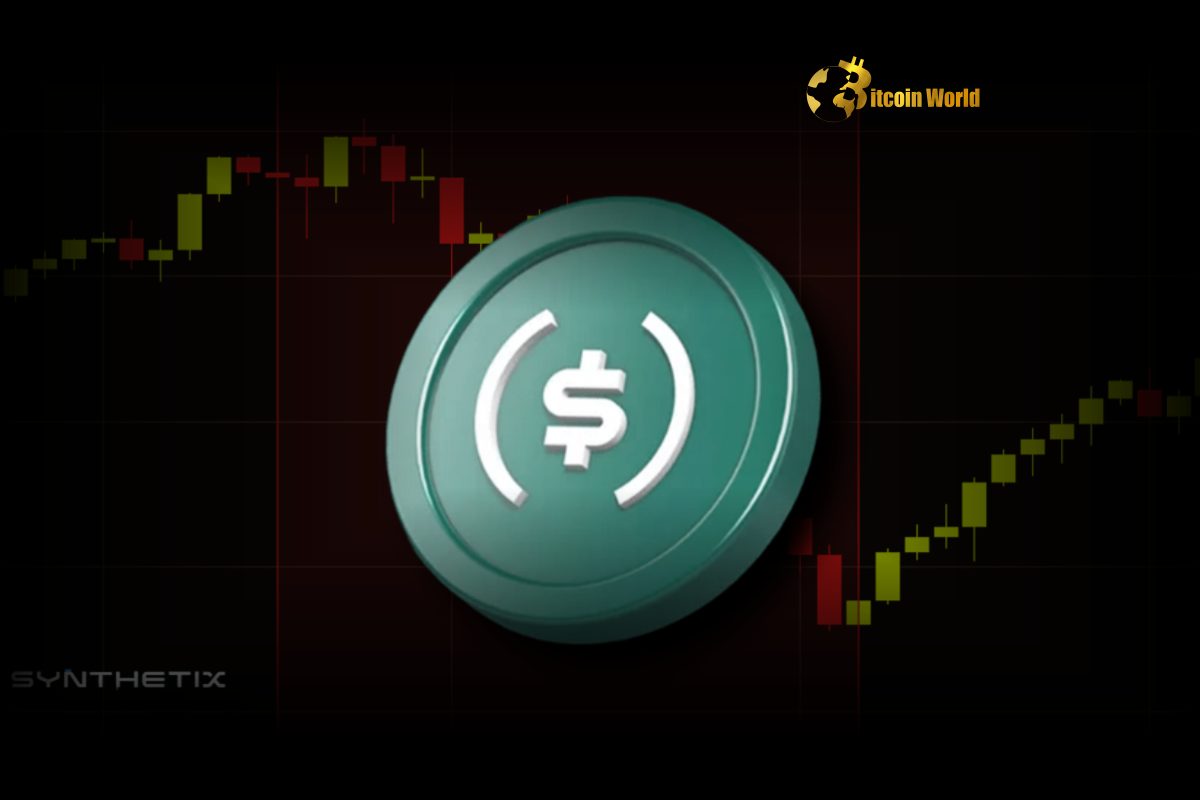
Is your stablecoin feeling a bit unstable? In the fast-paced world of decentralized finance (DeFi), even stablecoins can experience unexpected turbulence. Recently, Synthetix’s sUSD faced a depegging challenge, causing ripples within the crypto community. But fear not, Synthetix is stepping up with an innovative solution: the sUSD 420 Pool . Let’s dive into what this means for SNX stakers and the broader DeFi ecosystem. What’s the Buzz About the sUSD Depegging Issue? Stablecoins, designed to maintain a 1:1 peg with fiat currencies like the US dollar, are crucial for DeFi’s stability. When a stablecoin ‘depegs,’ it means it deviates from its intended value, causing uncertainty and potential losses for holders. sUSD, Synthetix’s native stablecoin, recently experienced such a depegging event. While fluctuations are normal, significant and prolonged deviations can be concerning. This is where Synthetix’s proactive approach comes into play, aiming to swiftly restore confidence and stability in sUSD. Introducing the Hero: The sUSD 420 Pool To tackle the depegging issue head-on, Synthetix founder Kain Warwick announced the launch of the sUSD 420 Pool. Think of this pool as a strategic reserve designed to re-establish and maintain the sUSD peg. But how does it work, and why is it called the ‘420 Pool’? Let’s break it down: Purpose-Built Solution: The sUSD 420 Pool is specifically engineered to address the current depegging of sUSD. It’s not a generic liquidity pool; it’s a targeted intervention. Incentivizing Stability: The core mechanism involves incentivizing SNX stakers to deposit sUSD into the pool. By increasing demand for sUSD, this mechanism aims to push its price back towards the $1 peg. Attractive Rewards: To make it worthwhile for SNX stakers, Synthetix is offering substantial rewards. We’re talking about a whopping 5 million SNX tokens distributed over 12 months! Daily SNX Payouts: According to Synthetix’s announcement on X (formerly Twitter), the daily reward distribution is approximately 13,698.6 SNX. That’s a significant incentive for participants. The ‘420’ Mystery: While the ‘420’ in the name might raise eyebrows and spark internet jokes, it’s likely just a memorable label. There’s no official explanation for the ‘420’ designation, but in the crypto space, sometimes memorable names are just as important as functional details! How Can SNX Stakers Benefit from the 420 Pool? Are you an SNX staker looking for opportunities to boost your holdings? The sUSD 420 Pool presents a compelling option. Here’s a closer look at the potential benefits: Earn Generous SNX Rewards: The primary allure is the chance to earn a share of 5 million SNX. By depositing sUSD, stakers become eligible for daily SNX rewards, effectively earning yield on their stablecoin holdings. Contribute to sUSD Stability: Participating in the pool isn’t just about personal gain; it’s also about contributing to the health of the Synthetix ecosystem. By depositing sUSD, you’re directly helping to restore its peg and ensure its reliability as a stablecoin. Simple Participation: The process is straightforward – SNX stakers deposit sUSD into the designated 420 Pool. The mechanics are designed to be user-friendly, encouraging broad participation. Long-Term Earning Potential: With rewards distributed over 12 months, this isn’t a flash-in-the-pan opportunity. It offers a sustained period for earning SNX, providing a more predictable income stream. Example: Imagine you deposit $10,000 worth of sUSD into the 420 Pool. You become part of the reward distribution mechanism, earning a proportional share of the daily 13,698.6 SNX. Over time, this can accumulate into a significant amount of SNX, especially if SNX’s value appreciates. Addressing the Depegging: Why is it a Priority for Synthetix? Why is Synthetix so focused on resolving the sUSD depegging issue? The answer lies in the fundamental role stablecoins play within DeFi and the Synthetix ecosystem itself. Maintaining User Trust: A depegged stablecoin erodes user trust. Restoring the peg is crucial for reassuring users that sUSD is a reliable and stable asset to hold and transact with. Ecosystem Health: sUSD is integral to the Synthetix ecosystem, used in various synthetic asset (Synths) trading and DeFi applications built on Synthetix. A stable sUSD is essential for the smooth functioning of these applications. Preventing Cascading Effects: Unaddressed depegging can lead to wider market instability. By proactively intervening, Synthetix aims to prevent potential negative ripple effects across the DeFi space. Demonstrating Resilience: Successfully addressing the depegging showcases Synthetix’s resilience and commitment to its ecosystem. It sends a strong message that Synthetix is capable of tackling challenges and prioritizing the stability of its assets. Are There Any Challenges or Risks to Consider? While the sUSD 420 Pool is designed as a solution, it’s important to approach it with a balanced perspective. What are some potential challenges or risks to keep in mind? Market Volatility: The crypto market is inherently volatile. Despite the pool’s incentives, external market forces could still impact sUSD’s price. SNX Price Fluctuations: The rewards are paid in SNX. If the price of SNX drops significantly, the real value of the rewards might decrease, although the number of SNX tokens earned remains constant. Smart Contract Risks: As with any DeFi protocol, there are smart contract risks involved. While Synthetix is a well-established project, smart contract vulnerabilities are always a possibility (though typically mitigated through audits). Opportunity Cost: Staking sUSD in the 420 Pool means locking up those funds. Stakers should consider if there are other potentially more lucrative opportunities elsewhere in the DeFi space. Actionable Insights: Should You Participate in the sUSD 420 Pool? So, should you, as an SNX staker, consider depositing sUSD into the 420 Pool? Here are some actionable insights to help you decide: Assess Your Risk Tolerance: Understand the potential risks and rewards. Are you comfortable with the inherent risks of DeFi and potential SNX price volatility? Evaluate SNX Reward Potential: Consider the current and potential future value of SNX. Do you believe in the long-term prospects of Synthetix and SNX? Diversification Strategy: Think about your overall portfolio diversification. Is allocating a portion of your sUSD holdings to the 420 Pool aligned with your broader investment strategy? Stay Informed: Keep up-to-date with announcements from Synthetix and monitor the performance of the sUSD peg. Follow Synthetix’s official channels and community discussions. Conclusion: A Bold Move Towards Stability Synthetix’s launch of the sUSD 420 Pool is a decisive and urgent step to address the sUSD depegging. By incentivizing SNX stakers to participate, Synthetix is leveraging its community to restore stability and confidence in its stablecoin. For SNX stakers, it presents an attractive opportunity to earn rewards while contributing to the health of the ecosystem. As DeFi continues to evolve, proactive measures like this demonstrate the resilience and adaptability of decentralized protocols in navigating challenges. The sUSD 420 Pool is more than just a quick fix; it’s a testament to Synthetix’s commitment to long-term stability and user trust in the dynamic world of decentralized finance. To learn more about the latest crypto market trends, explore our article on key developments shaping Ethereum price action. Finbold

Explosive Bitcoin RHODL Ratio Doubling: Unveiling Holder Behavior Secrets
Are you trying to decipher the cryptic signals of the Bitcoin market? Lately, a fascinating on-chain metric called the Bitcoin RHODL ratio has been making waves, and for good reason. This powerful indicator has just doubled, hinting at a potentially seismic shift in how Bitcoin holders are behaving. Let’s dive deep into what this means for you and the broader crypto landscape. Decoding the Bitcoin RHODL Ratio: A Key to Holder Behavior The Bitcoin RHODL ratio , or Realized HODL Ratio, is a fascinating tool in the world of on-chain analysis. It’s essentially a ratio between the Realized Value of coins held for 1 week to 1 month (representing short-term holders) and the Realized Value of coins held for 1 year to 2 years (representing mid-term holders). This comparison gives us a glimpse into the prevailing sentiment and activity of different Bitcoin holder groups. Think of it as a market sentiment barometer, but instead of relying on surveys, it uses actual blockchain data to gauge the temperature. Here’s a simplified breakdown of what the RHODL ratio helps us understand: Short-term holder activity: The 1 week to 1 month band reflects the actions of newer market participants, often speculators or those reacting to short-term price fluctuations. Mid-term holder accumulation: The 1 year to 2 year band represents holders who have weathered some market volatility and are likely accumulating for a longer-term outlook. Market sentiment shifts: By comparing these two groups, the RHODL ratio can highlight shifts in market sentiment, moving from speculative frenzies to more considered accumulation phases. According to Glassnode, a leading on-chain analytics firm, the Bitcoin RHODL ratio has experienced a significant jump recently. Let’s examine what this doubling actually signifies. Explosive Doubling: What Does a RHODL Ratio of 0.2 Signal? The recent surge in the Bitcoin RHODL ratio from approximately 0.1 in February to over 0.2 by mid-April is not just a minor blip; it’s a doubling that warrants attention. This increase is a significant signal, particularly when viewed in the context of historical market cycles. Here’s what a doubling of the RHODL ratio typically suggests: Decline in Short-Term Speculation: A rising RHODL ratio often indicates that the influence of short-term speculators is waning. This could mean fewer people are rapidly buying and selling Bitcoin based on short-term price movements. Renewed Mid-Term Holder Accumulation: Conversely, an increasing RHODL ratio suggests that mid-term holders, those who have held Bitcoin for 1 to 2 years, are becoming more prominent. This often points to a phase of renewed accumulation, where these holders are adding to their positions. Market Transition Phases: Historically, similar increases in the RHODL ratio have been observed during market transition phases, specifically after major market peaks. Glassnode points out parallels to periods following the 2018 and late 2021 peaks. To better understand the significance, let’s consider a table illustrating typical RHODL ratio ranges and their interpretations: RHODL Ratio Range Interpretation Market Phase Indication Low (e.g., below 0.1) Short-term holder dominance; potential speculative bubble Late Bull Market/Market Top Moderate (e.g., 0.1 – 0.2) Balance between short-term and mid-term holders; transition phase Market Correction/Early Accumulation High (e.g., above 0.2) Mid-term holder dominance; accumulation phase Accumulation/Early Bull Market As you can see, moving from 0.1 to 0.2 places us firmly in the ‘Moderate’ to ‘High’ range, suggesting a shift away from a potentially speculative phase and towards a more accumulation-focused market. But what does this mean for your Bitcoin strategy? Holder Behavior Shift: Actionable Insights for Your Crypto Strategy Understanding the shift in holder behavior , as indicated by the RHODL ratio, can provide valuable insights for your cryptocurrency strategy. It’s not just about observing a metric; it’s about interpreting what it tells us about the market’s underlying dynamics. Here are some actionable insights you can consider: Assess your risk appetite: If the market is transitioning away from short-term speculation and towards accumulation, it might signal a more stable, albeit potentially slower, growth phase. Adjust your risk appetite accordingly. Are you comfortable with long-term holding, or are you primarily focused on short-term gains? Re-evaluate your portfolio allocation: A shift towards accumulation might be a good time to re-evaluate your portfolio. Consider increasing your Bitcoin holdings if you believe in long-term appreciation, as mid-term holders seem to be doing. Look for accumulation opportunities: Market transition phases can present excellent accumulation opportunities. If the RHODL ratio continues to rise, it could indicate a sustained period of accumulation, potentially before the next major bull run. Monitor on-chain metrics: The RHODL ratio is just one of many on-chain metrics. Become familiar with others like the Net Unrealized Profit/Loss (NUPL), MVRV ratio, and reserve risk to get a more holistic view of market conditions. Stay informed: Keep an eye on analysis from firms like Glassnode and other reputable sources that provide on-chain data interpretations. Market conditions are dynamic, and staying informed is crucial. Navigating Market Cycles: Learning from Past Bitcoin Accumulation Phases The comparison to market transition phases after the 2018 and late 2021 peaks is crucial. These historical parallels offer valuable context for understanding the current market cycles and potential future trajectories of Bitcoin. Let’s briefly revisit these past phases: Post-2018 Peak: After the 2018 peak, the Bitcoin market entered a prolonged bear market and accumulation phase. During this time, the RHODL ratio likely showed similar patterns of short-term speculation decline and mid-term holder accumulation before the subsequent bull run. Post-Late 2021 Peak: Following the late 2021 peak, we again saw a market correction and a period of uncertainty. The current increase in the RHODL ratio mirroring patterns seen after these peaks suggests a potential similarity in market behavior and recovery phases. By studying these past cycles, we can observe that periods of increased RHODL ratio, signaling stronger mid-term Bitcoin accumulation , often precede significant market recoveries and bull runs. This historical context reinforces the importance of understanding the current RHODL ratio signal. Challenges and Considerations: Is the RHODL Ratio Foolproof? While the RHODL ratio is a powerful tool, it’s essential to acknowledge its limitations and consider potential challenges: Not a standalone indicator: The RHODL ratio should not be used in isolation. It’s most effective when combined with other on-chain metrics, technical analysis, and fundamental analysis. Market complexity: Cryptocurrency markets are influenced by numerous factors, including macroeconomic conditions, regulatory changes, and technological developments. The RHODL ratio is just one piece of the puzzle. Potential for manipulation: While on-chain data is generally transparent, there’s always a theoretical possibility of sophisticated actors attempting to manipulate metrics, although this is less likely to be impactful on a widely observed metric like RHODL. Interpretation nuances: Interpreting the RHODL ratio requires experience and context. What constitutes a “high” or “low” ratio can evolve over time and with changing market dynamics. Despite these challenges, the RHODL ratio remains a valuable tool for understanding Bitcoin market dynamics, particularly when assessing holder behavior and potential market phase transitions. Conclusion: Decoding Bitcoin’s Holder Behavior for Smarter Crypto Decisions The doubling of the Bitcoin RHODL ratio is a compelling signal that should not be ignored. It points towards a significant shift in market dynamics, away from short-term speculation and towards renewed mid-term holder accumulation. By understanding and interpreting this metric, you can gain a deeper insight into market sentiment and potentially make more informed decisions about your Bitcoin strategy. While no single metric is a crystal ball, the RHODL ratio offers a valuable lens through which to view the ever-evolving landscape of cryptocurrency. Keep monitoring this metric and combine it with other analyses to navigate the exciting, yet complex, world of Bitcoin. To learn more about the latest crypto market trends, explore our article on key developments shaping Bitcoin price action. Finbold




